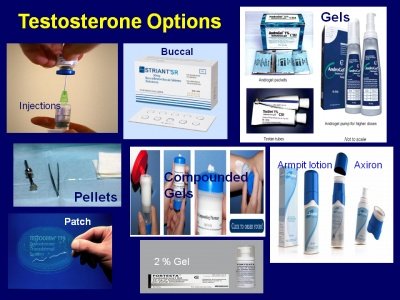Nelson Vergel
Founder, ExcelMale.com
J Cachexia Sarcopenia Muscle. 2018 Mar 15. doi: 10.1002/jcsm.12291. [Epub ahead of print]
Muscular responses to testosterone replacement vary by administration route: a systematic review and meta-analysis.
Skinner JW
Abstract
BACKGROUND:
Inconsistent fat-free mass (FFM) and muscle strength responses have been reported in randomized clinical trials (RCTs) administering testosterone replacement therapy (TRT) to middle-aged and older men. Our objective was to conduct a meta-analysis to determine whether TRT improves FFM and muscle strength in middle-aged and older men and whether the muscular responses vary by TRT administration route.

METHODS:
Systematic literature searches of MEDLINE/PubMed and the Cochrane Library were conducted from inception through 31 March 2017 to identify double-blind RCTs that compared intramuscular or transdermal TRT vs. placebo and that reported assessments of FFM or upper-extremity or lower-extremity strength. Studies were identified, and data were extracted and validated by three investigators, with disagreement resolved by consensus. Using a random effects model, individual effect sizes (ESs) were determined from 31 RCTs reporting FFM (sample size: n = 1213 TRT, n = 1168 placebo) and 17 reporting upper-extremity or lower-extremity strength (n = 2572 TRT, n = 2523 placebo). Heterogeneity was examined, and sensitivity analyses were performed.
RESULTS:
When administration routes were collectively assessed, TRT was associated with increases in FFM [ES = 1.20 ± 0.15 (95% CI: 0.91, 1.49)], total body strength [ES = 0.90 ± 0.12 (0.67, 1.14)], lower-extremity strength [ES = 0.77 ± 0.16 (0.45, 1.08)], and upper-extremity strength [ES = 1.13 ± 0.18 (0.78, 1.47)] (P < 0.001 for all). When administration routes were evaluated separately, the ES magnitudes were larger and the per cent changes were 3-5 times greater for intramuscular TRT than for transdermal formulations vs. respective placebos, for all outcomes evaluated. Specifically, intramuscular TRT was associated with a 5.7% increase in FFM [ES = 1.49 ± 0.18 (1.13, 1.84)] and 10-13% increases in total body strength [ES = 1.39 ± 0.12 (1.15, 1.63)], lower-extremity strength [ES = 1.39 ± 0.17 (1.07, 1.72)], and upper-extremity strength [ES = 1.37 ± 0.17 (1.03, 1.70)] (P < 0.001 for all). In comparison, transdermal TRT was associated with only a 1.7% increase in FFM [ES = 0.98 ± 0.21 (0.58, 1.39)] and only 2-5% increases in total body [ES = 0.55 ± 0.17 (0.22, 0.88)] and upper-extremity strength [ES = 0.97 ± 0.24 (0.50, 1.45)] (P < 0.001). Interestingly, transdermal TRT produced no change in lower-extremity strength vs. placebo [ES = 0.26 ± 0.23 (-0.19, 0.70), P = 0.26]. Subanalyses of RCTs limiting enrolment to men ≥60 years of age produced similar results.
CONCLUSIONS:
Intramuscular TRT is more effective than transdermal formulations at increasing LBM and improving muscle strength in middle-aged and older men, particularly in the lower extremities.
Muscular responses to testosterone replacement vary by administration route: a systematic review and meta-analysis.
Skinner JW
Abstract
BACKGROUND:
Inconsistent fat-free mass (FFM) and muscle strength responses have been reported in randomized clinical trials (RCTs) administering testosterone replacement therapy (TRT) to middle-aged and older men. Our objective was to conduct a meta-analysis to determine whether TRT improves FFM and muscle strength in middle-aged and older men and whether the muscular responses vary by TRT administration route.

METHODS:
Systematic literature searches of MEDLINE/PubMed and the Cochrane Library were conducted from inception through 31 March 2017 to identify double-blind RCTs that compared intramuscular or transdermal TRT vs. placebo and that reported assessments of FFM or upper-extremity or lower-extremity strength. Studies were identified, and data were extracted and validated by three investigators, with disagreement resolved by consensus. Using a random effects model, individual effect sizes (ESs) were determined from 31 RCTs reporting FFM (sample size: n = 1213 TRT, n = 1168 placebo) and 17 reporting upper-extremity or lower-extremity strength (n = 2572 TRT, n = 2523 placebo). Heterogeneity was examined, and sensitivity analyses were performed.
RESULTS:
When administration routes were collectively assessed, TRT was associated with increases in FFM [ES = 1.20 ± 0.15 (95% CI: 0.91, 1.49)], total body strength [ES = 0.90 ± 0.12 (0.67, 1.14)], lower-extremity strength [ES = 0.77 ± 0.16 (0.45, 1.08)], and upper-extremity strength [ES = 1.13 ± 0.18 (0.78, 1.47)] (P < 0.001 for all). When administration routes were evaluated separately, the ES magnitudes were larger and the per cent changes were 3-5 times greater for intramuscular TRT than for transdermal formulations vs. respective placebos, for all outcomes evaluated. Specifically, intramuscular TRT was associated with a 5.7% increase in FFM [ES = 1.49 ± 0.18 (1.13, 1.84)] and 10-13% increases in total body strength [ES = 1.39 ± 0.12 (1.15, 1.63)], lower-extremity strength [ES = 1.39 ± 0.17 (1.07, 1.72)], and upper-extremity strength [ES = 1.37 ± 0.17 (1.03, 1.70)] (P < 0.001 for all). In comparison, transdermal TRT was associated with only a 1.7% increase in FFM [ES = 0.98 ± 0.21 (0.58, 1.39)] and only 2-5% increases in total body [ES = 0.55 ± 0.17 (0.22, 0.88)] and upper-extremity strength [ES = 0.97 ± 0.24 (0.50, 1.45)] (P < 0.001). Interestingly, transdermal TRT produced no change in lower-extremity strength vs. placebo [ES = 0.26 ± 0.23 (-0.19, 0.70), P = 0.26]. Subanalyses of RCTs limiting enrolment to men ≥60 years of age produced similar results.
CONCLUSIONS:
Intramuscular TRT is more effective than transdermal formulations at increasing LBM and improving muscle strength in middle-aged and older men, particularly in the lower extremities.
















